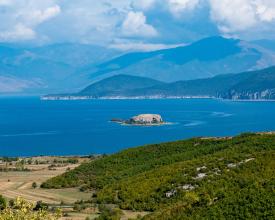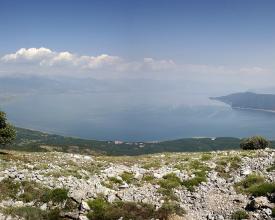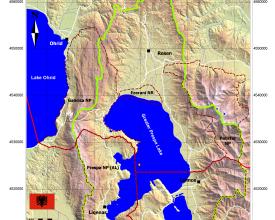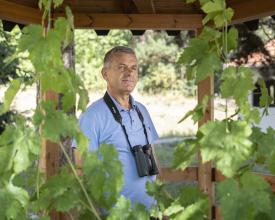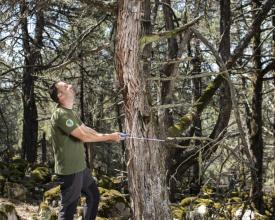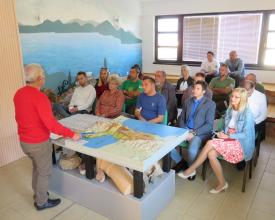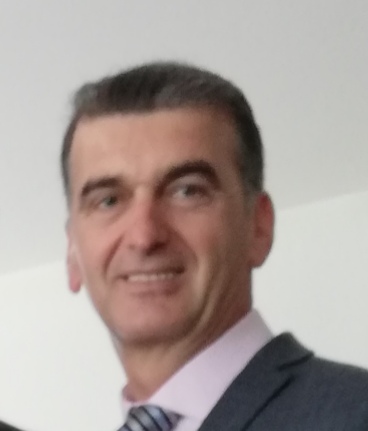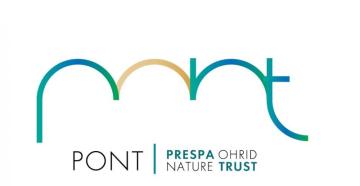
Closing the gap between strategic and operational planning for protected areas
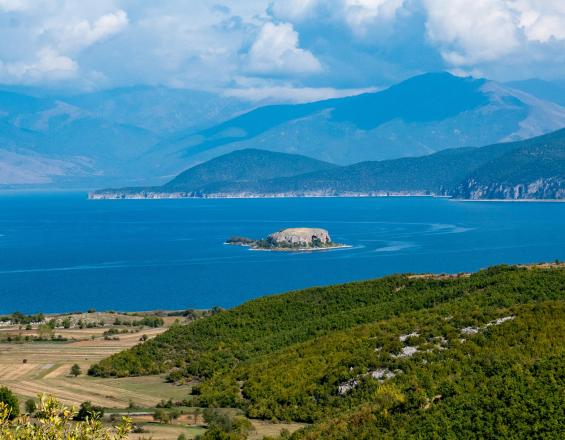
The prospect of securing long-term co-financing from Prespa Ohrid Nature Trust (PONT) has propelled the Protected Area (PA) management authorities in the Wider Prespa Area in Albania and North Macedonia to overhaul planning and implementation of their core operations. They are now regularly using the Management Effectiveness Tracking Tool (METT) as a decision-support tool to achieve more transparent, evidence-based, and adaptive management, tied to the annual management cycle. The findings and results of the METT assessment inform the development of the operational plans using a template developed by PONT. PONT’s co-financing enables PA managers recruit new staff and deploy adequate resources to sustain the core management functions over the long-term, such as biodiversity monitoring, environmental education or visitor management that were often neglected in the past or contingent on projects or other forms of intermittent external support.
Context
Challenges addressed
While Managements Plans have been gradually integrated into the long-term management cycles for the PAs in the WPA, there is still a wide gap with annual or operational planning. The gap exists due to a number of reasons, including unrealistic and non-operational Management Plans, lack of knowledge and skills, inadequate work procedures, missing or ineffective decision-support systems, as well as insecure funding. The heavy dependence over the past two decades on short-term international project funding and external consultants have often perpetuated these weaknesses. The resulting ad-hoc and inconsistent management hampers the effective implementation of the management plans.
Location
Process
Summary of the process
The building blocks are connected to three of the six elements of the PAME framework. Each management cycle, be it 1-, 5-, or 10-years, begins with understanding the context of the protected area. The METT (1) is being used to organize and evaluate information from the previous year concerning the status and threats to biodiversity, stakeholders and communities, and its findings and results help determine preferences among options in preparing the operational plan for the subsequent year. The operational plan and budget Templates (2) used to submit grant applications to PONT enable PA managers to integrate both recurrent (routine) with those non-recurrent activities (projects) that are achievable with existing staffing, technical and financial resources, including the co-financing from PONT. With PONT securing the funding of the core operations (3) up to 50% of the total annual budget by 2030, and possibly beyond, PA managers can consistently pursue the achievement of the management objectives set out in the Management Plan without relying significantly on intermittent short-term donor projects, which creates a sense of ownership towards the operational plans.
Building Blocks
Regular METT assessments
Regular Management Effectiveness Tracking Tool (METT) Assessments are becoming an integral part of the annual management cycle in the organizations managing the Protected Areas in the WPA. The METT is being established as an important decision-support tool enabling more transparent, evidence-based, and adaptive management, tied to the annual management cycle. It helps the managers to organize and streamline annual cycles of reporting while its findings and results help determine preferences among options in preparing the operational plan for the subsequent annual cycle.
METT assessments are an integral part of PONT’s monitoring and evaluation system at both program level and individual grants. Grantees managing protected areas are required to use METT to assess the impact of PONT’s grants on management effectiveness and track progress over time.
Enabling factors
Most of the Grantees could build up on their previous experience in conducting METT assessment over the past decade required for projects supported by international donors. The National Agency for Protected Areas in Albania have made the annual METT assessments mandatory, whereas in North Macedonia they are regularly used in the process for developing management plans for PAs.
Lesson learned
PA Managers stop seeing added value of conducting the METT assessment after few iterations when changes in management effectiveness are too subtle to be assessed or acknowledged by the METT scorecard. A participatory approach in combination with a more in-depth and meticulous assessment based on evidence, as well as an extensive use of the columns “Comment/Explanation” and “Next Steps” in the Assessment Form, improved the objectiveness and the perceived benefits of the METT Assessments. The participatory approach also enabled PA managers interact and discuss the issues covered by METT with the key stakeholders while the use of facilitators in the process made this interaction more effective and productive. Advanced METT is being piloted to help increase the objectivity of the assessment and track changes in effectiveness more consistently every year.
Taking operational planning seriously
PA management authorities in WPA use a Template developed by PONT in Microsoft Excel to prepare annual operational plans and budget that are part of their grant applications to PONT. These operational plans state the actions to be implemented each year to achieve the objectives set out in the management plan for the PA concerned. While most of the actions are selected from among those identified in the management plans, additional actions arise from the (annual) METT assessments, by learning from experience, or in response to uncertainty and change. The operational plans integrate both recurrent (routine) activities and non-recurrent activities (projects) to ensure resources are adequately distributed across the different functional areas. The operational plans only include activities that are currently achievable with existing staffing, technical and financial resources, including the co-financing from PONT.
Using pre-defined templates developed by the national authorities on protected areas in both Albania and North Macedonia, the PAs in the WPA prepare annual (operational) plans that are subject of formal approval by the national authorities.
Enabling factors
Aside from the budget that is more detailed, the Template developed by PONT is similar in content to those used under national legislation. The operational plans and budget are prepared at the end of each calendar year for the subsequent one and constitute the key element of the grant applications submitted to PONT; the grant application process of PONT is aligned with the national system planning and reporting cycles to avoid duplication of work.
Lesson learned
Although operational plans have been in use for about a decade in North Macedonia and for several years in Albania, management and on-ground work continued to be largely ad-hoc and inconsistent. The PONT Template and the input from the regular METT assessments enable PA managers develop more realistic annual operational plans and budget. The PONT Template prompts the managers to plan in more detail the deployment of human, financial and technical resources related to the basic functional areas, such as biodiversity monitoring, patrolling, habitat restoration, environmental education or visitor management that were often neglected in the past. This proved to be quite a challenging task due to the lack of adequate procedures and systems in place, in particular for functions and activities where no prior experience exists.
Core funding secured
Improved operational planning enables the PA managers clearly define their capacity gaps and most critical resource requirements for effective implementation of the activities. PONT’s long-term co-financing enables the PA managers in WPA to recruit new staff and deploy resources to sustain their core management functions. Using the budget Template developed by PONT, PA managers develop a detailed budget for each action that is broken down into 5 cost categories: staff costs; consultants; equipment and infrastructure; travel, meeting, and training costs; and consumables, operating and other costs. PONT co-financing amounts up to 50% of the total annual budget and is used for covering both recurrent and non-recurrent cost related to the core management operations, except for procurement of equipment and construction of new infrastructure exceeding 20,000 EUR
Enabling factors
The PONT budget Template helps PA managers combine effectively PONT’s co-financing with funding from the government or the revenue they generate, as well as projects implemented by conservation NGOs or international donors and agencies.
Lesson learned
Lack of detailed data on PA management costs hamper effective conservation planning and management. PAs in the WPA lack systems in place that connect financial data with the on-ground conservation actions. Financial information is commonly managed for the purposes of meeting national financial reporting requirements, that are general in nature, rather than management. The annual budget using PONT’s template is organized in a way that permits costs aggregation and analysis by results that are in turn linked to management objectives. This also informs the operational planning in the subsequent management cycle and helps identify opportunities for improved productivity and effectiveness. Further progress in operational planning would depend on the capacity to improve the estimates of the required costs of different functional areas of work and also of the levels of management performance.
Impacts
Having a predetermined but secured total budget allocation for the year, and in the long-term, the PA managers in the WPA are able to develop and maintain the key functional areas and programs, based on the Management Plan and thereby increase the Management Effectiveness. This is true in particular for monitoring of biodiversity, visitor management and environmental education programs that are still inexistent or underdeveloped due to the heavy reliance on short-term and often discontinued support from international donors that provided initial investments and technical assistance, but no funding to sustain the operations in the long-run. With PONT’s long-term co-financing the PA managers are able to recruit and retain new staff and gradually retrain the existing ones to develop the key programs and increase their capacity to mobilize and implement additional funding from external sources for non-recurrent activities that have a more flexible timeline of implementation. Several rangers, biologists, communication and education experts have joined the PA authorities in WPA over the past two years filling in long-vacant positions of critical importance for their basic operations.
Beneficiaries
Management authorities of Galicica and Pelister National Parks, Lake Prespa Monument of Nature and Ezerani Nature Park in North Macedonia and Prespa National Park, in Albania
Sustainable Development Goals
Story
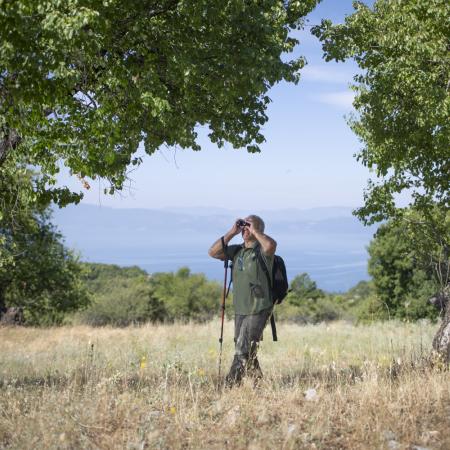
Over the past two decades, international donors have played a key role in establishing new protected areas and management authorities in the WPA, such as the Prespa NP in Albania or the establishment of the management body for Lake Prespa MN and Ezerani NP in North Macedonia, or in facilitating a transition from operations dominated by timber and firewood production to developing competencies for the key functions of modern protected area work at Galicica and Pelister NP in North Macedonia. Their support was essential for developing the first management plans for these protected areas, starting with Pelister NP in 2006, building the basic visitor infrastructure, such as hiking and biking trails and visitor centres, and procuring the basic equipment required for monitoring of biological diversity and day-to-day management operations. The initial advancements achieved with significant inputs from external experts and service providers could not be maintained by the existing staff whose skills and competences could be developed only gradually and to a limited extent. With the key operations being underfunded by the governments or dependent on the profit generated from extraction of biomass, the operational plans could not implement the actions and measures prescribed by the Management Plan. The heavy dependence on intermittent and short-term projects by international donors, often implemented by external implementing agencies or with significant involvement of external experts, has resulted with opportunistic rather than planned management.
With PONT committing long-term co-financing of recurrent management costs, by 2030 and beyond, PA managers can count on adequate human and financial resources over a long period of time and realistically allocate them among a range of possible activities to develop and maintain the key functional areas and programs in their protected area. Over time they will be able to gain experience and gather data that will help improve their estimates of the costs for the new functional areas of work, and improve on the operational planning and ultimately achieve higher levels of management performance and effectiveness. The first results of the improved operational planning are evident in the 2020 Operational Plan Galicica NP that has a strong focus on visitor management and environmental education and excludes firewood production activities, for the first time, setting a precedence for national parks in North Macedonia.

